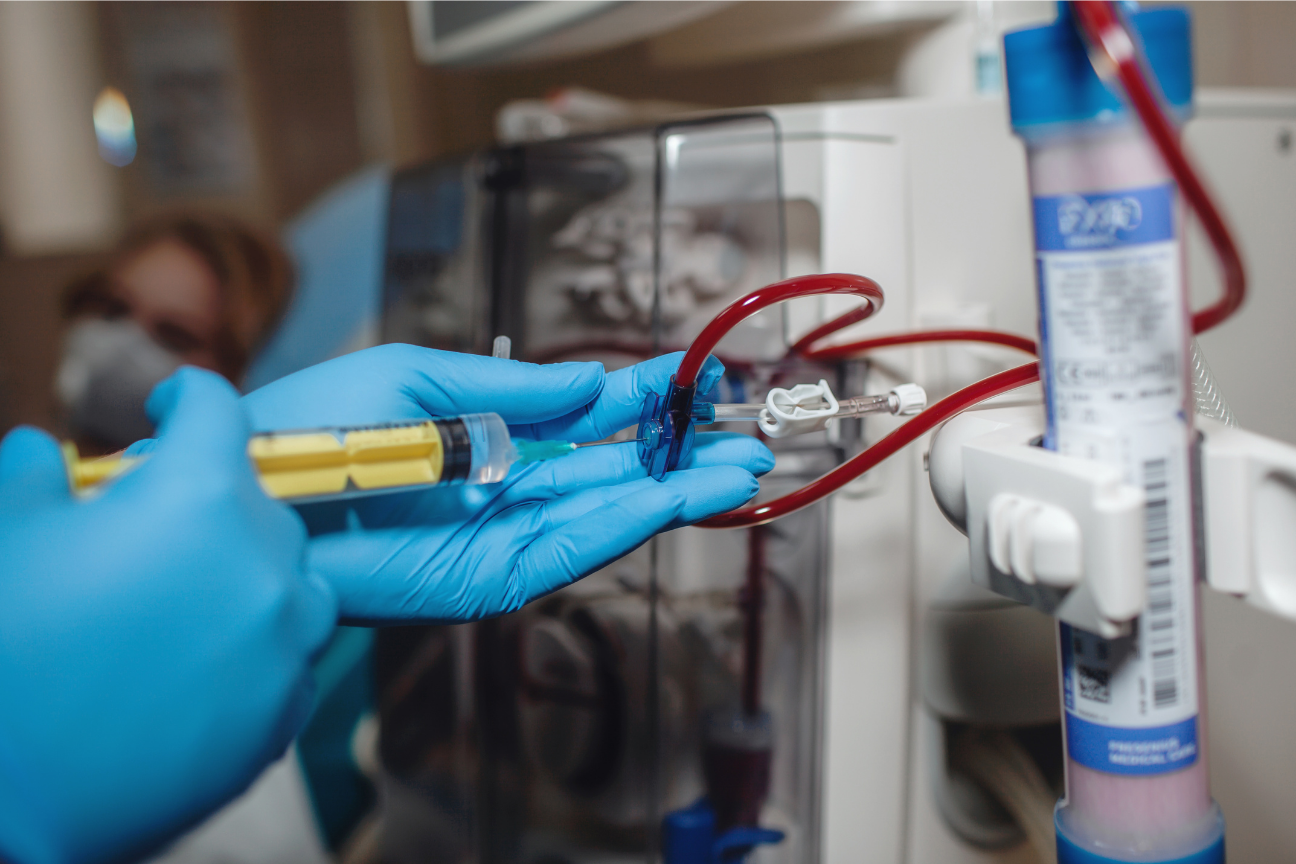What is Hemodialysis and Why is it Performed?
Hemodialysis is a treatment method used to cleanse the body of waste products and excess water when the kidneys are no longer functioning adequately. In this process, the patient's blood is drawn out of the body, filtered through a dialysis machine, and returned to the body.
Why is Fluid Management So Important?
In individuals with kidney failure, the body struggles to remove excess water, which can lead to fluid buildup and various health issues. During hemodialysis sessions, a certain amount of fluid is removed from the body, but this may not fully balance the fluid intake. Therefore, carefully controlling the amount of fluid consumed between dialysis sessions is crucial to avoid complications.
The importance of fluid management can be emphasized for the following reasons:
Heart health: Excess fluid puts a strain on the heart, increasing the risk of heart failure.
Breathing difficulties: Fluid buildup in the lungs can make breathing difficult.
Blood pressure: Fluid overload can raise blood pressure, increasing the risk of heart attack and stroke.
Edema: Swelling (edema), especially in the legs, can occur due to fluid retention.
Other health issues: It can lead to various problems such as irregular heart rhythms and headaches.
Characteristics and Importance of Hemodialysis Fluid

Hemodialysis fluid is a special solution that mimics the function of the kidneys, removing waste products and excess water from the body. The composition and properties of this fluid play a critical role in the success of dialysis treatment.
The key components and ideal parameters of hemodialysis fluid include:
- Sodium (Na): Regulates water balance in the body. The sodium level in dialysis fluid is adjusted based on the patient's blood pressure and fluid retention.
- Potassium (K): Essential for nerve and muscle functions. Since high potassium levels can lead to arrhythmias, the potassium level in the dialysis fluid is carefully monitored.
- Bicarbonate (HCO3): Maintains acid-base balance. Bicarbonate, normally produced by the kidneys, is added to the dialysis fluid to prevent acid buildup.
- Calcium (Ca): Important for bone health. The calcium level in dialysis fluid is adjusted according to the patient’s parathyroid hormone levels and bone mineral density.
- Magnesium (Mg): Necessary for nerve and muscle functions. The magnesium level in dialysis fluid is determined based on the patient's overall health condition.
- Glucose: Used to maintain osmotic pressure during dialysis.
Other important characteristics include:
- pH level: Typically maintained between 7.2 and 7.4, which is close to the pH level of blood.
- Dialysis fluid temperature: Kept near body temperature, usually between 36-38°C.
- Flow rate of dialysis fluid: Controlled by the dialysis machine and adjusted according to the degree of kidney function loss, body weight, and other factors.
Importance of Hemodialysis Fluid
Removal of waste products: Waste substances such as urea and creatinine are transferred into the dialysis fluid, allowing their removal from the body.
Maintaining fluid balance: Excess fluid moves into the dialysis fluid and is removed from the body.
Preserving electrolyte balance: The levels of electrolytes like sodium, potassium, and calcium are balanced with the help of dialysis fluid.
Maintaining acid-base balance: Bicarbonate in the dialysis fluid helps regulate the body's pH level by maintaining the acid-base balance.
Since each patient’s degree of kidney function loss, age, gender, overall health status, and other factors vary, dialysis fluid is customized for each individual. The dialysis nurse and doctor adjust the composition and flow rate of the dialysis fluid based on the patient’s specific needs.
How is Fluid Management Done in Hemodialysis Patients?
Fluid management in hemodialysis patients is carried out according to a personalized plan determined by a physician. This plan is typically based on factors such as the patient's weight, overall health, and their response to dialysis sessions.
Key points in fluid management include:
- Daily fluid intake: Patients are recommended to consume a specific amount of fluid daily, which may vary based on their weight and other factors.
- Fluids in food: Foods like soups, fruits, and vegetables also contain water, so their consumption should be considered when managing fluid intake.
- Hidden salt: Since salt causes the body to retain water, limiting salt intake is important. Processed foods often contain hidden salt, so patients should be mindful of their consumption.
- Weight monitoring: Weight gain between dialysis sessions indicates fluid retention. Therefore, regular weight monitoring is essential for patients.
- Medication: Some medications can cause fluid retention, so it's important to discuss any prescribed drugs with the doctor.
Water purification is absolutely necessary for hemodialysis. During dialysis, the patient's blood is drawn out of the body, filtered, and returned. The water used in this process comes into direct contact with the patient’s blood, so it must be extremely clean and pure to ensure safety.
Why is Water Treatment So Important?
Risk of bacteria and microbes: Unpurified water may contain bacteria and microbes that can enter the patient's bloodstream during dialysis, leading to serious infections.
Mineral buildup: Minerals found in hard water (like calcium and magnesium) can accumulate in the dialysis machine, reducing its lifespan and efficiency.
Chlorine and other chemicals: Chemicals like chlorine, commonly used in water treatment facilities, can negatively affect the patient’s health during dialysis if not removed.
Pyrogens: Pyrogens present in unpurified water can cause fever and other complications during dialysis.
Water Treatment Systems Used for Hemodialysis Fluid
Reverse Osmosis (RO): Purifies water by allowing only water molecules to pass through while trapping all other substances.
Deionization: Removes ions (minerals) from the water, making it highly purified.
Ultrafiltration: Cleans water by trapping large molecules and particles.
UV Sterilization: Uses UV light to kill microorganisms in the water.
Water treatment systems in hemodialysis centers often combine these methods to achieve the highest level of purity required for dialysis.
Water treatment for hemodialysis fluid is crucial for the patient's health and the safety of the dialysis process. Therefore, regular maintenance and checks of these systems in dialysis centers are essential to ensure optimal performance and safety.